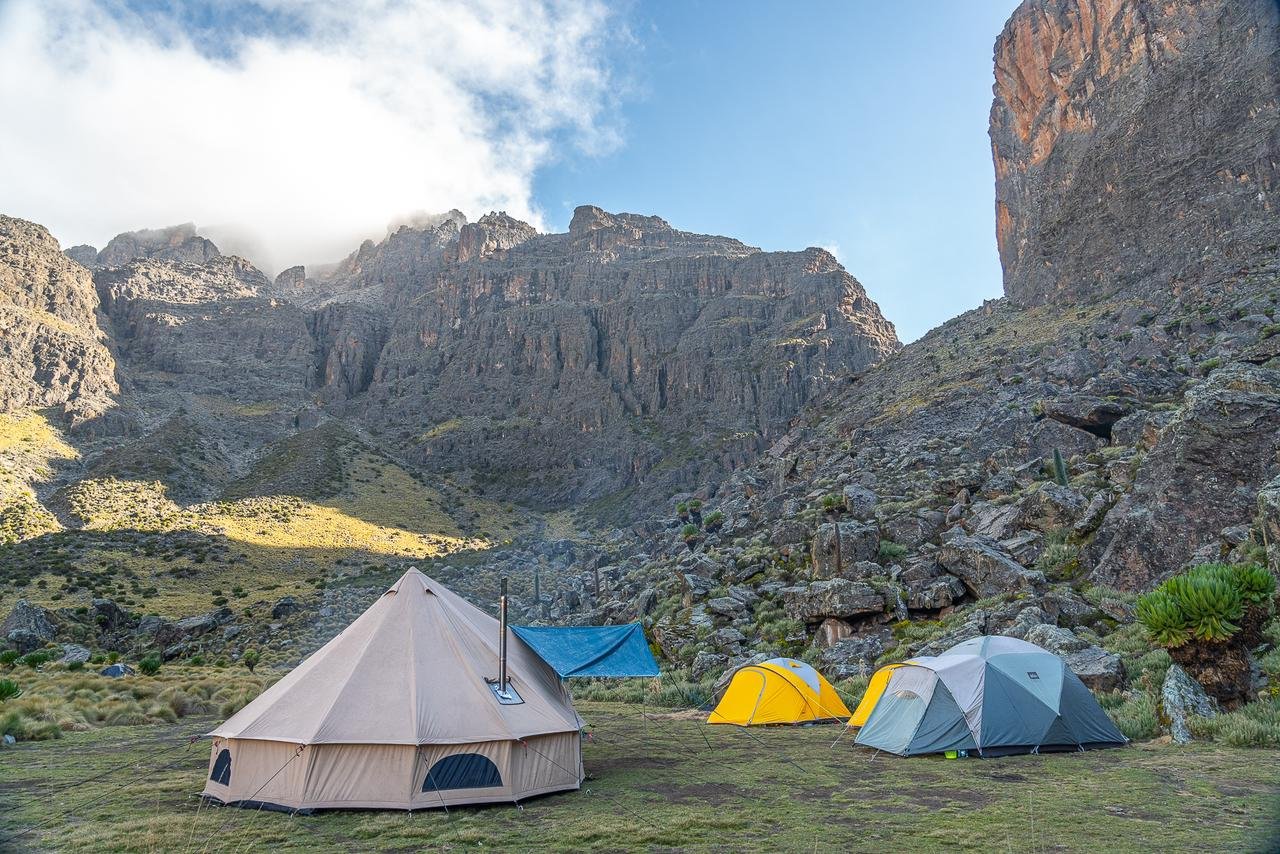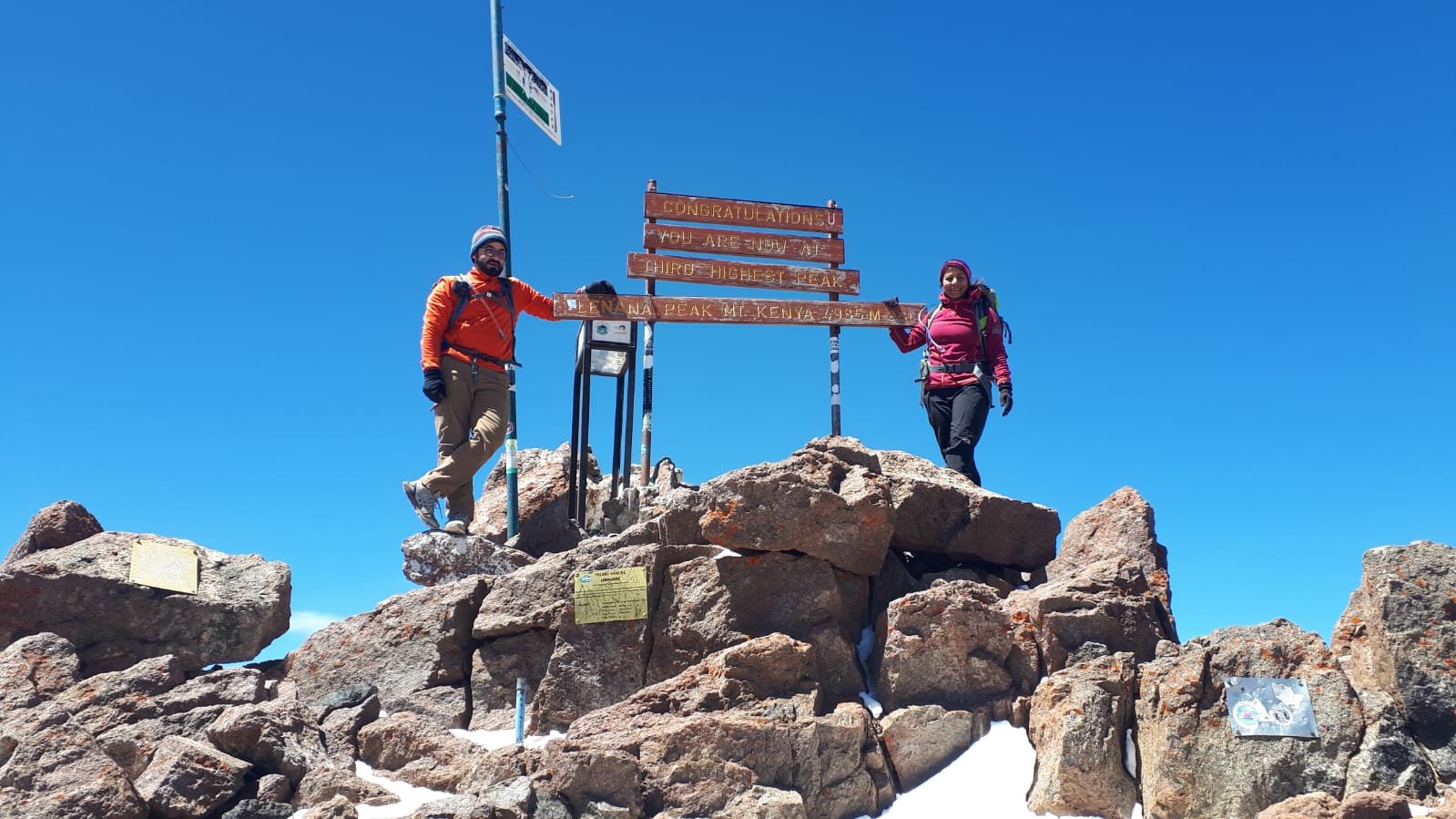Where will your next hiking holiday be? - Kenya
Part 1 - Mount Kenya, an alternative to Kilimanjaro
Whether you only have a weekend or you want to escape the norms of everyday life and immerse yourself with a month long hiking trip we’ve got you covered with ideas, inspiration and even a few trips of our own you could join us on.
Trekking in different corners of the world has its constants, all offer a physical challenge of sorts and a steady release of serotonin, that feel good hormone. However, heading abroad has the added benefit of experiencing different cultures, reaching higher altitudes and getting off the beaten path.
This series of blogs that we will release during the first month of 2024, will hopefully share some ideas and inspiration of where this year could take you. With trips in Africa, Asia and Europe of varying lengths and styles but always promising an adventure we will showcase why we have chosen these destinations for trips this year. Firstly, we want to introduce our trip to Mount Kenya, read on to hear why.
Thought about trekking Kilimajaro? Why not consider a quieter more scenic alternative, the often overlooked Mount Kenya.
The second highest mountain in Africa sees less than half the number of tourists each year compared to its more famous brother, Kilimanjaro. Whilst both mountains are extinct volcanoes and actually only 200 miles apart they couldn’t look more dissimilar. Kilimanjaro is an enormous uniformed mountain with a very wide base and the distinctive white cap of its glacier, unfortunately this has almost entirely disappeared now and is expected to have melted within the next 10 years. Most of Kilimanjaro’s distinctive features such as the western breach are from volcanic activity such as craters collapsing. On the other hand, Mount Kenya consists of a range of distinct peaks with steep rocky faces yielding an extremely visually interesting mountain.
These individual summits were carved by an ice cap which covered the upper half of the mountain and was thought to look like Mount Fuji in Japan. Compare this to how it looks today and it’s fascinating to visualise the power of the glaciers eroding the rock over thousands of years, not to mention it originally stood at 7,000m and now its highest point is Point Batian at 5,199m.
The beauty of these contrasting peaks is you can visit both mountains and come up across two totally different experiences. Mount Kilimanjaro is documented heavily online so we are going to focus our attention on its slightly lower but no less significant neighbour, Mount Kenya.
Mount Kenya comprises 3 major peaks, Point Batian (5,199m), Point Nelion (5,188m) and Point Lenana (4,985m). The majority of visitors summit Point Lenana as it is the only trekking summit on the mountain. Both Batian and Nelion are climbing peaks requiring technical equipment and ropes, subsequently only 2% of tourists tackle such climbs.
On a journey towards the summit of Point Lenana the trail takes you through a variety of ecological zones which reflect the temperature and availability of resources to these alpine species. As you ascend, you will leave behind the farms of the lowlands and will sequentially ascend through forests of alpine bamboo. As the altitude increases the temperature drops too low to support the growth of large trees and smaller trees grow until only bushes are able to survive the hostile conditions.
Above is a unique eco-zone to this region, known as the Afro-alpine zone, which consists of a variety of giant rosette plants which appear as cactus-like plants sprouting from the soil before the conditions are too hostile for even these specifically adapted plants and the landscape remains exclusively to bare rock and the last remaining glaciers. Like the vegetation, wildlife too tends to concentrate around the lower slopes with monkeys, antelopes and even elephants present in the low forests. At higher elevations smaller mammals continue to thrive, although there is a myth that leopards exist in the alpine zone and despite many people claiming to have spotted one there is a lack of photographic evidence to prove this point.
Kenya has 8 walking routes on offer to the summit of Point Lenana, approaching the mountain from every direction. If you’ve read any of our articles before you’ll be aware that at Fit4 we do everything in our power to avoid out and back trails wherever possible. What’s the point of travelling across the world to walk up and down the same path? When there are other options providing scenery, views and ultimately a totally new experience to your way up!
For this reason we suggest starting on the east and traversing to the west - a route which combines both the Chogoria and Sirimon route in a journey we shall call the Chogoria-Sirimon (creatively).
The route starts by the Chogoria gate (2,750m) which is possible to access by 4x4, although we would suggest ditching the vehicle at around 2,400m to get some time on your feet after a 3 to 4 hour journey from Nairobi. Chogoria gate is the official start to the trek and also where we will enter the Mount Kenya National Park - with a variety of lodges and campsites, depending on your preferences. From the gate the next logical place to sleep is Lake Ellis, just tucked off the main trail. Despite this, many bypass this camp and rush on to camp at 4,000m. For us, we would rather check out the points of interest (en route) and give our bodies that extra day to acclimatise to the altitude, increasing our chances of a successful summit! The route to Lake Ellis provides interesting landscapes and a constant reminder of Mount Kenya’s previous life as a volcano, as well as options to explore Nithi waterfall and caves (almost from a movie!). Following a night by the lake you then leap frog to another Lake, Michaelson this time, just touching 4,000m. Lake Michaelson sits in a deep bowl and feeds waterfalls lower down the slopes from a stream exiting the lake from the western side. A night here is not one you will forget in a hurry. A great benefit to this route is the following day offers a couple of options so you can best manage the increase in altitude.
Option 1:
If you are feeling good, stop at the Austrian Hut (4,790m) and enjoy a night nestled below all 3 major summits of Mount Kenya. With the peaks of Batian and Nelion towering above, you feel glad you don’t have to scale the near vertical rock face but instead can enjoy a pleasant hike up only another 200m to reach the summit of Point Lenana for sunrise the following morning. After basking in the morning rays and celebrating with your team you can then descend the opposite side of the peak, now joining the Sirimon route on the western side of the mountain. The first stop after the early morning summit should be Shipton’s camp for some much needed breakfast before letting gravity do the work and continue down to Old Moses camp to be collected by 4x4 in the afternoon.
Option 2:
The potential snagging point for some in option 1 is the ascent from Lake Michaelson to the Austrian hut is ~800m. In terms of an altitude and acclimatisation point of view, sleeping no higher than 500m intervals each night greatly reduces the chances of altitude sickness. For this reason, if you arrive at the Austrian hut and are beginning to feel the effects of the elevation we would advise you to rain check a night here and instead ascend the final hundred metres or so to the summit of Point Lenana*. Once at the summit you can quickly descend to the relief and increased oxygen levels at Shipton’s camp (4,200m). This camp is only 200m higher than the previous night at the lake, so whilst you have to dig in a little to get over the last push of Point Lenana any emerging symptoms of altitude sickness will likely alleviate once you have rested a little in the evening. After a big day up and over the summit, you can enjoy a relaxing morning before making your way back downhill to the Old Moses Camp (3,300m) where you can be collected by 4x4!
*It is important to note that if symptoms exceed the usual headaches and nausea at Austrian hut we would not advise ascending over Point Lenana and instead play it safe and descend back via the Chogoria route until symptoms subside. A benefit to the route we suggested via Lake Ellis and Lake Michaelson is that it allows your body to more thoroughly acclimatise on the ascent, making the likelihood of altitude sickness far lower when you begin to reach the Austrian hut.
No matter which option you take - Well done you’ve done it! You can finally put your feet up on the journey back to Nairobi, reminiscing about the good times, the hard times and dreaming about that cold pint waiting for you in the hotel!
In our opinion quieter trails and the vast, unique scenery of Mount Kenya makes it a more rewarding hike than its more famous neighbour, Kilimanjaro. With the added bonus of some truly breathtaking campsites on the shores of the East facing lakes… perfect for the morning sunrise! Both mountains offer a physical challenge and you certainly wouldn’t regret either, but in our humble opinion Kenya is an unsung hero and the reason we have chosen it as one of our top 3 international trips for 2024!
Click here to find out more information about our Mount Kenya trip in 2024, a weeklong trip taking place in October 2024.
However, if you don’t have quite enough time to make it to Kenya this year, then why not take a look at our trip to Mount Toubkal, Morocco.








